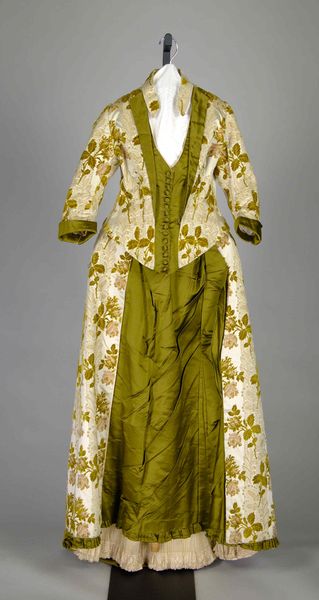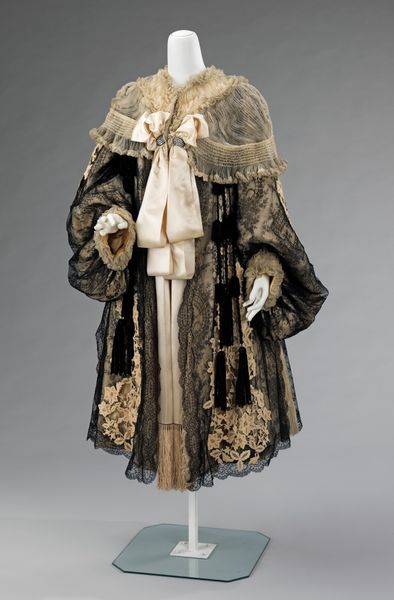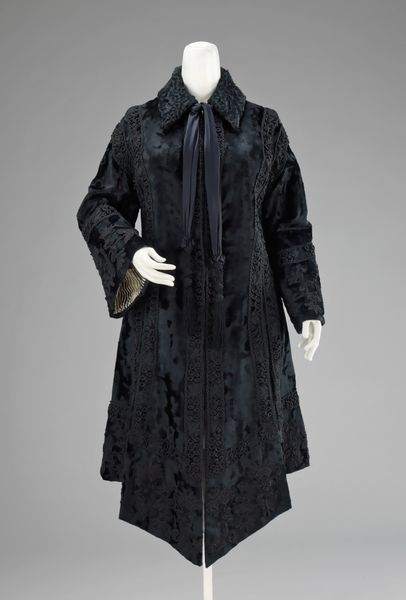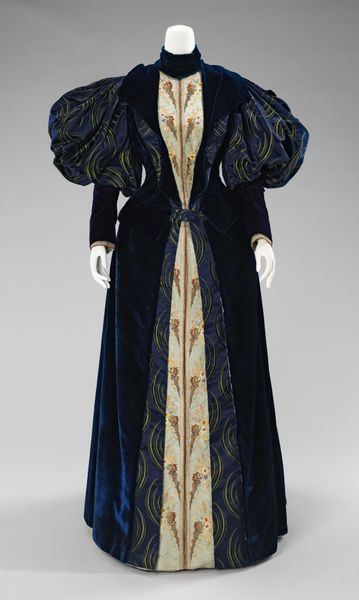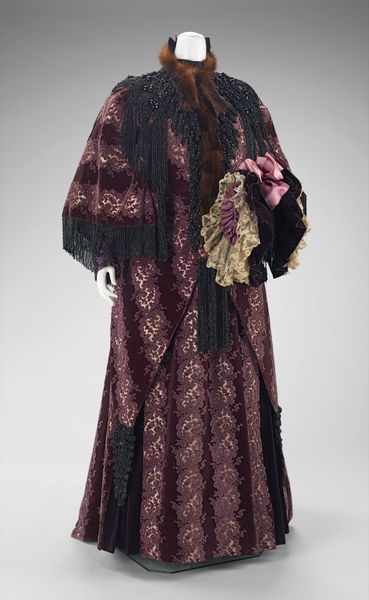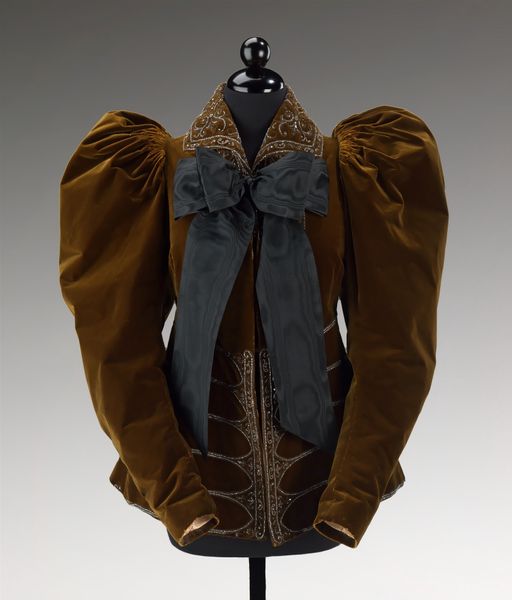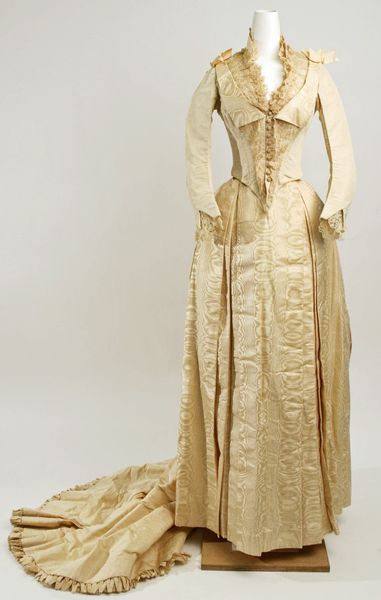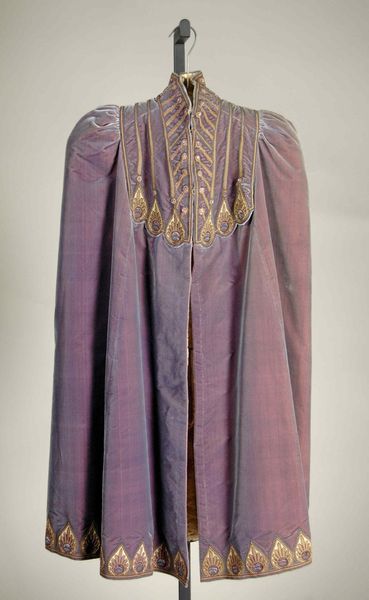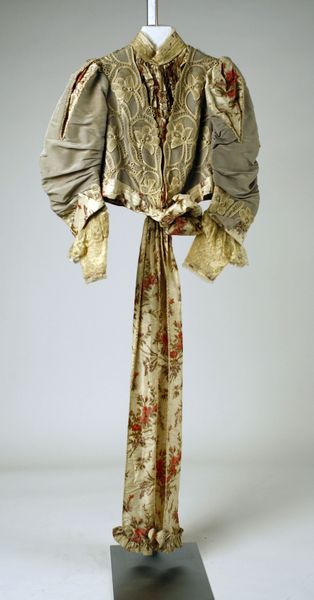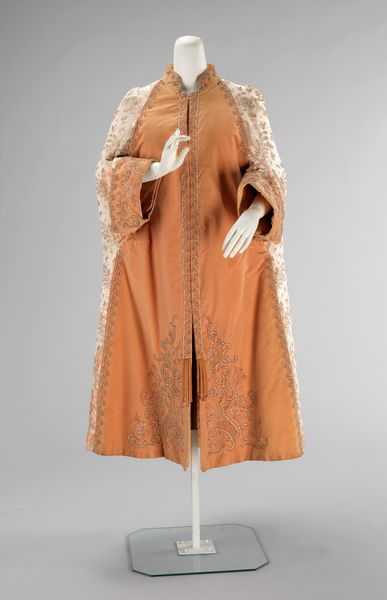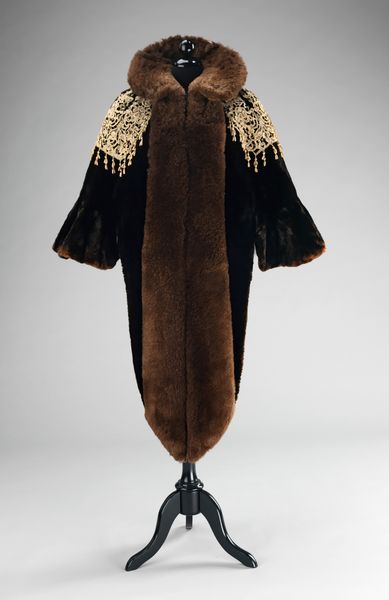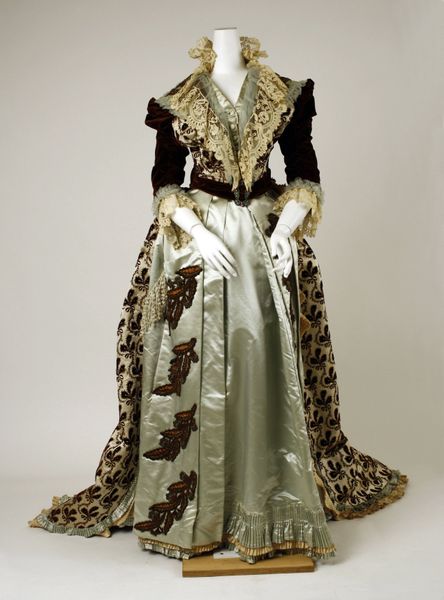
weaving, textile
#
fashion design
#
underwear fashion design
#
baroque
#
fashion mockup
#
weaving
#
textile
#
collage layering style
#
fashion and textile design
#
historical fashion
#
wearable design
#
clothing theme
#
clothing photo
#
clothing design
Copyright: Rijks Museum: Open Domain
This housecoat, though its maker remains anonymous, speaks volumes through its floral motifs. These botanical patterns, rendered in gold thread, are not mere decoration. They evoke a sense of growth and prosperity, reflecting the era's burgeoning interest in the natural world and its symbolic potential. Consider, now, how floral designs have bloomed throughout history. From ancient Egyptian garlands to the Renaissance's allegorical gardens, flowers have consistently served as emblems of life's transience and beauty. In medieval tapestries, verdant fields symbolized paradise, while in Dutch still lifes, each bloom carried moral weight. Even today, floral patterns resonate deeply, tapping into a collective memory of nature's enduring power. This coat reminds us that even in domestic garments, the human spirit seeks connection to the primal forces of growth and regeneration. Its maker, consciously or not, was drawing upon a deep well of cultural symbols, weaving a silent narrative into its very fabric.
Comments
rijksmuseum about 2 years ago
⋮
As of 1691 William III was both the stadholder of the Netherlands and the king of England. He ordered ‘Jappan gownes’ in both countries. These long quilted housecoats derived from Japanese kimonos were a status symbol. From an invoice we know that William bought six metres of green lining silk, perhaps for this very housecoat. The lining has faded, as has the outer fabric, which was once dark purple.
Join the conversation
Join millions of artists and users on Artera today and experience the ultimate creative platform.
